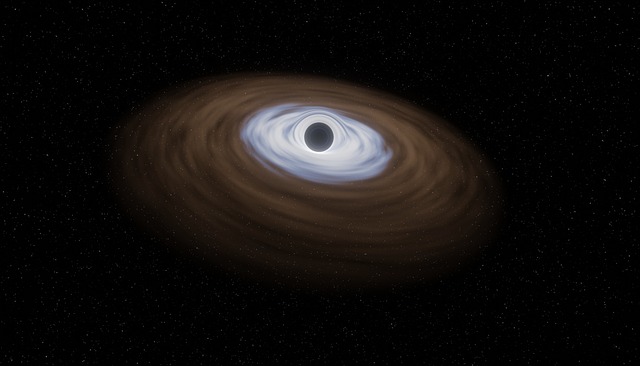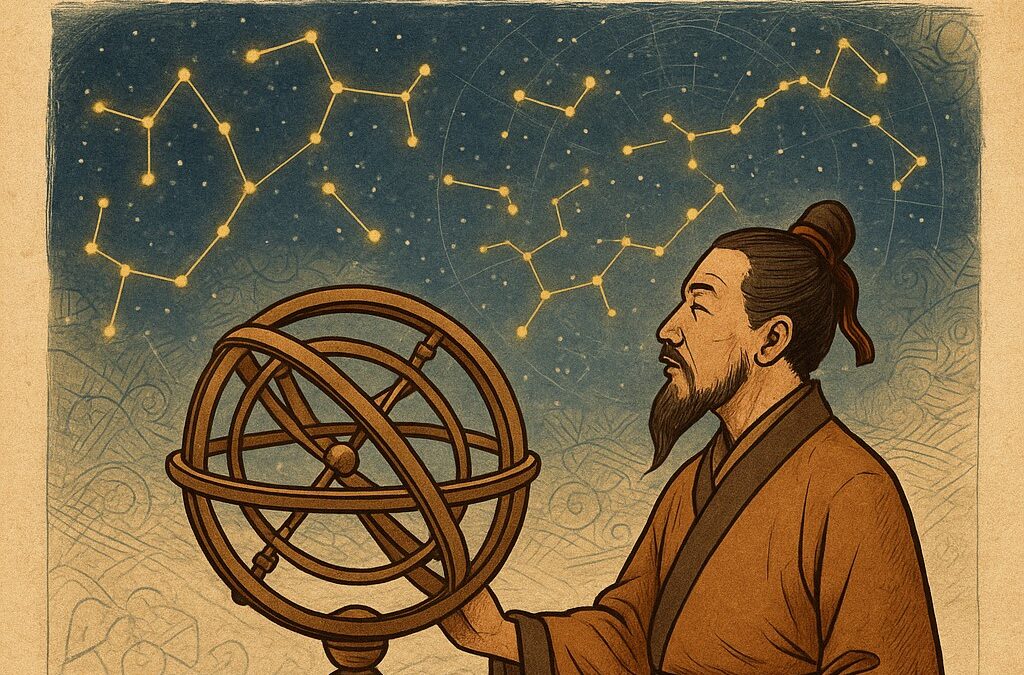Alright, let’s talk about something truly mind-blowing: the Solitary black hole discovery! Imagine a black hole, not part of a binary system, not feasting on a companion star, but just… wandering. Well, astronomers have confirmed the first one, a cosmic nomad drifting through the vastness of space. This finding, published in The Astrophysical Journal, is a game-changer, opening up a whole new chapter in our understanding of these gravitational behemoths. Moreover, it challenges our previous assumptions about how many of these invisible objects are out there.
Table of Contents
So, how did they find this Solitary black hole discovery? The answer is pretty ingenious. They used a technique called gravitational microlensing, which is based on Einstein’s theory of general relativity. Basically, when a massive object passes in front of a distant star, its gravity bends and amplifies the star’s light. By carefully measuring this effect, scientists could infer the presence, and even the mass, of the unseen object. This particular discovery involved years of meticulous observations and analysis, using data from multiple telescopes, including the Hubble Space Telescope.
We also Published
In the vast, enigmatic expanse of the cosmos, where celestial bodies dance in a perpetual ballet of gravity and light, a profound discovery has been made. Astronomers have, at long last, confirmed the existence of the first truly solitary black hole, a celestial wanderer adrift in the interstellar void. This remarkable finding, published in The Astrophysical Journal, offers a tantalizing glimpse into the hidden population of these enigmatic objects, challenging our understanding of the universe’s structure and evolution. The detection of this lone black hole represents a significant leap forward in astrophysics, providing unprecedented opportunities to study the nature of these gravitational behemoths and their influence on the cosmic landscape. The identification of this celestial wanderer, a cosmic anomaly, opens a new chapter in our quest to comprehend the universe’s deepest mysteries.
Unveiling the Lone Black Hole: A Cosmic Detective Story
The journey to identify this lone black hole was a testament to the ingenuity and persistence of astronomers. Unlike black holes that reside in binary systems, where their presence is often revealed by the telltale wobbles of their stellar companions or the gravitational waves they emit during mergers, this object offered no such easy clues. Instead, its existence was inferred through a phenomenon known as gravitational microlensing. This effect, predicted by Einstein’s theory of general relativity, occurs when a massive object passes in front of a distant star, causing its light to be bent and amplified. The degree of amplification and the duration of the event provide crucial information about the mass and nature of the lensing object. The initial detection came from data collected by the Optical Gravitational Lensing Experiment (OGLE) and the Microlensing Observations in Astrophysics (MOA) surveys, which scan the skies for these subtle gravitational distortions.
The data from these surveys, dating back to 2011, hinted at the presence of a massive object. However, confirming its nature required meticulous follow-up observations using the Hubble Space Telescope. Over six years, Hubble captured eight observations, meticulously measuring the way the starlight was warped by the unseen object’s gravity. These observations, combined with photometry data from 16 different telescopes and spectroscopy observations at the peak of amplification, provided the crucial evidence needed to estimate the object’s mass. The initial analysis suggested a mass approximately 7.15 times that of our Sun, a value consistent with a stellar-mass black hole. Yet, the path to confirmation was not without its challenges. A subsequent analysis in 2022, using more Hubble data, produced a different conclusion, suggesting a mass range that could potentially indicate a neutron star, which sparked debate among scientists.
The Gravitational Lens: Decoding the Lone Black Hole’s Signature
The process of identifying this lone black hole involved a complex interplay of observational techniques and theoretical models. Gravitational microlensing, the key to its discovery, is a subtle phenomenon. It requires precise measurements of the light from a background star as it passes behind a massive object. The degree to which the light is amplified and the duration of the event are directly related to the mass of the lensing object. In this case, the team meticulously analyzed the light curves – graphs that plot the brightness of the star over time – to extract information about the black hole. The team had to account for the light from a bright neighboring star, which obscured the background star, and the variations caused by different thermal environments in each Hubble orbit.
The researchers also conducted a thorough search for any signs of a companion star, a common feature in many black hole systems. Their search yielded no evidence of any object larger than 0.2 solar masses within a vast distance, equivalent to 2,000 times the distance between the Earth and the Sun. This absence of a companion further supported the conclusion that this was indeed a solitary black hole. The analysis incorporated additional Hubble observations, extending the observation period to 11 years, and updated OGLE data. The revised analysis, incorporating the additional Hubble observations and updated photometry, yielded more accurate results consistent with their previous measurements and their conclusion that the lens is a stellar-mass black hole. The confirmation of this lone black hole is a significant milestone, offering a new perspective on the distribution and evolution of these enigmatic objects in the cosmos.
The Implications of a Lone Black Hole: A Universe of Mysteries
The discovery of this lone black hole has profound implications for our understanding of the universe. It suggests that these objects, once thought to be rare, may be far more numerous than previously imagined. The universe is likely teeming with these invisible wanderers, remnants of massive stars that have collapsed under their own gravity. While this is the first confirmed solo black hole, it is unlikely to be the only one. The universe is believed to be filled with these invisible rogues, but it’s rare for one to become known to us. The existence of a large population of solitary black holes could have significant consequences for the dynamics of galaxies and the distribution of dark matter. The team’s findings, as stated in a new paper, indicate that their revised analysis, incorporating the additional Hubble observations and updated photometry, yields more accurate results consistent with their previous measurements and their conclusion that the lens is a stellar-mass black hole.
The study of these lone black holes will provide valuable insights into the processes of stellar evolution and the formation of black holes. By studying their distribution and properties, astronomers can test and refine their models of galaxy formation and evolution. The discovery also opens up new avenues for exploring the nature of dark matter, the mysterious substance that makes up a significant portion of the universe’s mass. As we continue to refine our observational techniques and develop more sophisticated theoretical models, we can expect to uncover even more of these cosmic secrets. The identification of this lone black hole is not just a scientific achievement; it is a testament to human curiosity and our relentless pursuit of knowledge about the universe we inhabit. The discovery marks a pivotal moment in our quest to understand the universe’s most enigmatic phenomena.
We also Published
RESOURCES
- Astronomers confirm the existence of a lone black hole
- Yes, there really is a black hole on the loose in Sagittarius
- Lone Black Holes Discovered Adrift in the Galaxy | HubbleSite
- “This Thing Shouldn’t Exist”: Scientists Stunned by Discovery of a …
- Lone Black Holes Discovered Adrift in the Galaxy – NASA Science
- First Utterly Alone Black Hole Confirmed Roaming The Cosmos …
- List of nearest known black holes – Wikipedia
- Astronomers Confirm First ‘Lone’ Black Hole Discovery – and It’s in …
- What is the largest single structure discovered in the universe? : r …
- Astronomers Discover First-Ever Lone Black Hole Drifting Through …






0 Comments